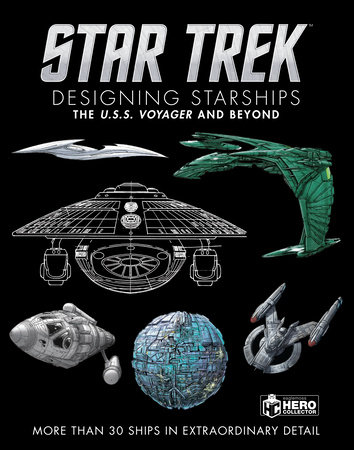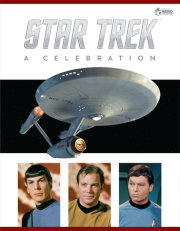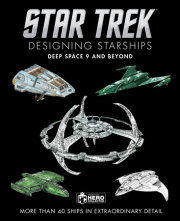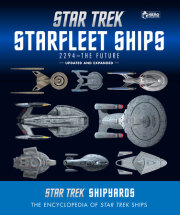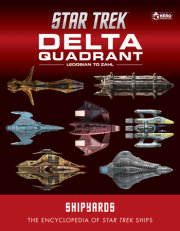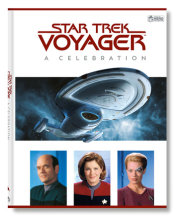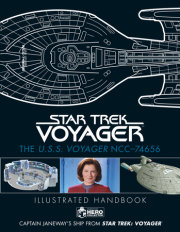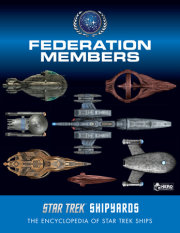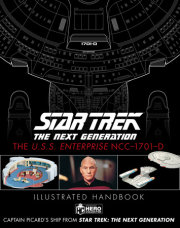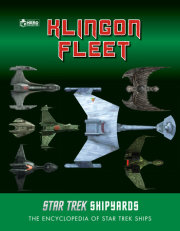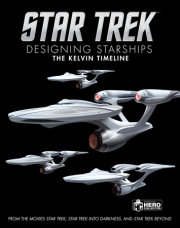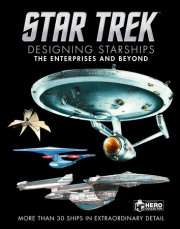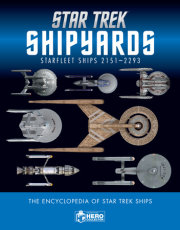DESIGNING THE U.S.S. VOYAGERThe design for the
U.S.S. Voyager drew inspiration from a killer whale, a Starfleet runabout, and a sleek and curvy car.
The
U.S.S. Voyager was always meant to hark back to Kirk’s original
Enterprise. Whereas the
Enterprise-D had been designed to be a hotel in space with all the facilities of a university,
Voyager was a small, maneuverable craft. “It is a ship that was specifically designed for action,” co-creator Jeri Taylor told
Cinefantastique. “It’s smaller, it more maneuverable, it can land on a planet’s surface, it can be sent into situations where a Galaxy-class starship simply can’t function.”
Design work began in the fall of 1993, as
STAR TREK: THE NEXT GENERATION’s run on TV drew to a close. The project was headed up by TNG’s production designer, with
Voyager’s design being led by concept artist Rick Sternbach.
Richard James knew that their starship would also need a new look, but, as he remembers, it couldn’t be too new, “Mr. Berman said, ‘I want it to be different; I don’t want it to look like
THE NEXT GENERATION or
DEEP SPACE NINE.’ But he also said that if people were flipping channels, then he wanted them to instantly recognize the fact that it was
STAR TREK.”
As Sternbach recalls, when he first started work on the ship he knew very little about it. The writer’s bible described Voyager as having a “streamlined, bullet sort of shape” and he was told that the producers wanted the new design to be much smaller than the
Enterprise-D.
FIRST THOUGHTSAs usual, he started by producing a series of rough sketches, looking for a basic shape. “The early felt-pen sketches show a number of shapes drawn over and over, as I attempted to settle on a first best guess at the new ship. A streamlined, dart-like primary hull was matched to a flattened, elongated engineering hull, sporting swept-back runabout pylons.”
In these days it was important that whatever Sternbach designed could actually be made as a physical model and as he recalls, he talked to the visual effects producer Dan Curry about any requirements his team might have.
“Even in the first design phase, Dan Curry reminded me of the general rules of miniature design, such as making certain that motion control mount points were near the model’s center of gravity, and that the belly mount be the absolute lowest part of the ship, in order to avoid problems with the bluescreen filming.”
From those very first sketches Sternbach was moving away from Andy Probert’s
Enterprise-D with its ‘fat’ saucer as he started to look for a more streamlined design. While he was working, the concept for
Voyager continued to evolve as the executive producers continued to work on the bible. As a result, he would receive requests that changed the way he thought about the design.
“Along the way, we were told the ship would be able to land on a planetary surface. This was a real departure from the norm,” he says. “So deployable landing gear and other arrangements of resting on hull components were sketched out. The producers also wanted some part of the ship to animate or articulate either the nacelles, or a weapon array, or perhaps the navigational deflector.
“Variations filled more paper as the proportions of different parts changed, pieces were added and subtracted, and hull contours, both gently curved and angular, were explored in perspective. Even in the rough sketches, a lot of design ideas got worked out, concerning placement of familiar items like impulse engines and phasers.”
Copyright © 2019 by & TM CBS Studios Inc. © Paramount Pictures Corp. STAR TREK and related marks and logos are trademarks of CBS Studios Inc. All Rights Reserved. Published by Eaglemoss Ltd.. All rights reserved. No part of this excerpt may be reproduced or reprinted without permission in writing from the publisher.




